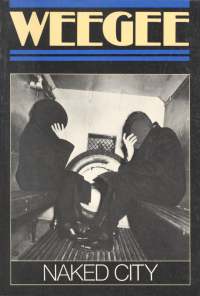“I have no inhibitions, and neither has my camera. I have lived a full life and have tried everything. What may be abnormal to you is normal to me. If I had to live my life over again, I would do it all the same way – only more so.” Arthur Fellig, aka Weegee, admitted to his own, ghoulishly voyeuristic nature, but he was never one to apologise for it. At least he only watched. Others perpetrated. Weegee’s work was the proof, set out in black and white. The titles he gave to his unflinching photographs are often laconic, like labels tagged to evidence: Dead Gangster; Shot and Killed on East Street; Henry Maxwell Shot in Car.
By his own estimation,
The police nicknamed him Weegee after the Ouija board, because he seemed to have a sixth sense tuned to murder, arson and most other forms of nocturnal urban affray. As often as not, he beat the cops themselves to the scene, despite having to haul around an unwieldy flashgun and large-format Speed Graphic camera. Most of the dead bodies he snapped with this aptly named instrument were still warm, Weegee noted with quiet professional satisfaction.
But his most unusual quality was his remorseless ability to stare horror in the face. Whatever it might be, he would unflinchingly capture the story of the night: “A truck crash with the driver trapped inside, his face a crisscross...


